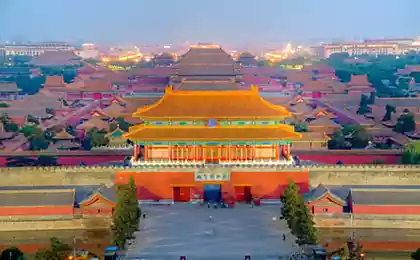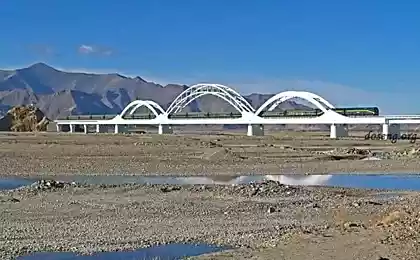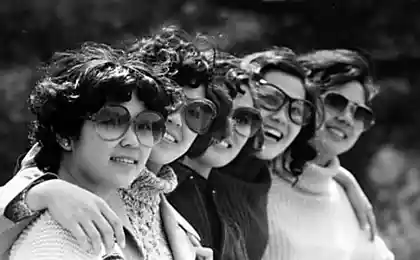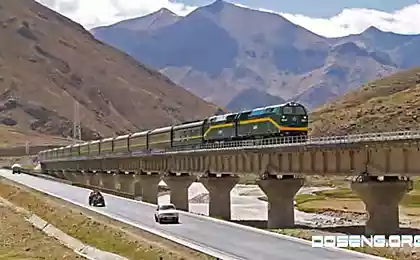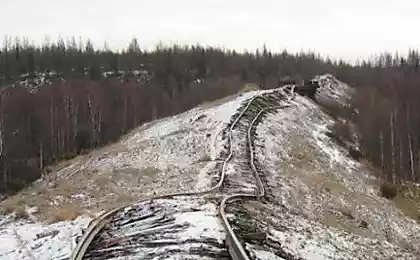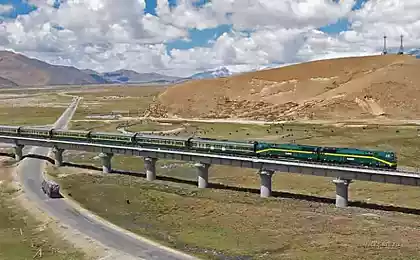1013
Backbone of the Qinghai-Beijing
For most of us the railroad - it's just not very fast and not very comfortable way to travel from point A to point B. But your opinion on such a journey would certainly have changed, if you were suddenly in ultramodern train on the mountainous area in the world of railways laid in permafrost conditions. We are talking about the fantastic engineering project, recently brought to life in China: rail, interconnected Qinghai Province (China) and the Tibet Autonomous Region.
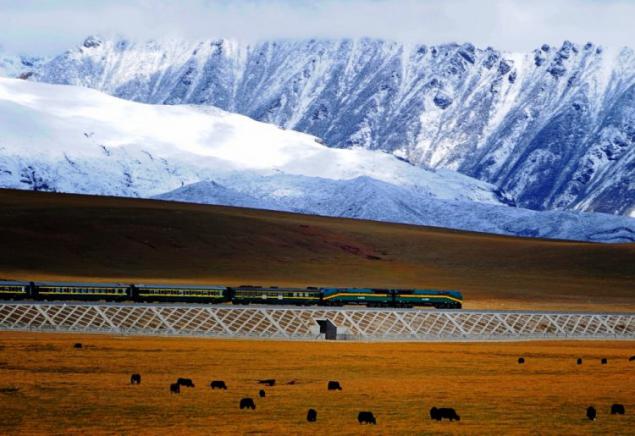
The highest point of the line, station Tanggula Pass, situated at an altitude of 5072 m above sea level, and the very length of the railway is 1956 kilometers of track laid on the high plateaus. Settlements in these areas quite a bit, so many of the outlying stations are automated and unmanned.

The trains plying on the highway, there are special oxygen masks, because the atmospheric pressure at a height of only 35-40% of normal. Ultramodern powerful engines can reach speeds of up to 120 km / h, and of special tourist cars with great views of the mountains.

The construction of these paths was of great importance for the development and economic cooperation so remote administrative units, so it was planned as early as the middle of the last century: the railway project was approved in 1960. For various reasons, the embodiment of this idea began only in 1974, when a period of five years was laid the first railway station, which connects the capital of Qinghai Xining and Golmud city, located on the Tibetan Plateau.

Erection of the most complex, high-mountain, part of the railway, the end point of which was the city of Lhasa, began in 2000. The working conditions here are very difficult, because the permafrost and thin air creating additional obstacles to workers. In addition, one of the primary tasks of construction was to preserve the fragile ecosystem of the area, so a large part of the railway line is laid on trestles, and embankments have special tunnels for the migration of rare species of animals.

Construction of the railway Qinghai-Tibet became an important part of enhancing economic development in remote areas of China, besides these pathways become the most high-mountain in the world.

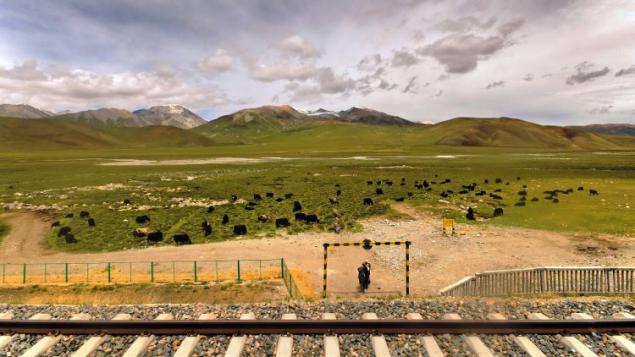


The highest point of the line, station Tanggula Pass, situated at an altitude of 5072 m above sea level, and the very length of the railway is 1956 kilometers of track laid on the high plateaus. Settlements in these areas quite a bit, so many of the outlying stations are automated and unmanned.

The trains plying on the highway, there are special oxygen masks, because the atmospheric pressure at a height of only 35-40% of normal. Ultramodern powerful engines can reach speeds of up to 120 km / h, and of special tourist cars with great views of the mountains.

The construction of these paths was of great importance for the development and economic cooperation so remote administrative units, so it was planned as early as the middle of the last century: the railway project was approved in 1960. For various reasons, the embodiment of this idea began only in 1974, when a period of five years was laid the first railway station, which connects the capital of Qinghai Xining and Golmud city, located on the Tibetan Plateau.

Erection of the most complex, high-mountain, part of the railway, the end point of which was the city of Lhasa, began in 2000. The working conditions here are very difficult, because the permafrost and thin air creating additional obstacles to workers. In addition, one of the primary tasks of construction was to preserve the fragile ecosystem of the area, so a large part of the railway line is laid on trestles, and embankments have special tunnels for the migration of rare species of animals.

Construction of the railway Qinghai-Tibet became an important part of enhancing economic development in remote areas of China, besides these pathways become the most high-mountain in the world.





